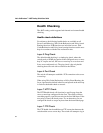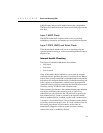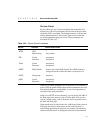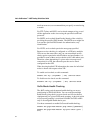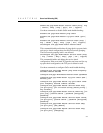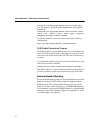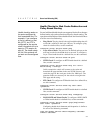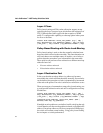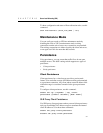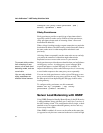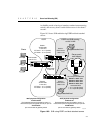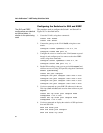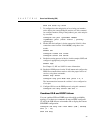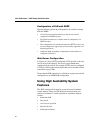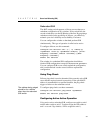
376
Intel
®
NetStructure™ 480T Routing Switch User Guide
Layer 4 Flows
Policy-based routing and Web cache redirection support an any
option for the Layer 4 protocol type which allows the redirection of
TCP, UDP and other traffic types with the exception of ICMP
traffic. To configure this capability, use the
any option in the syntax
for flow re-direction.
create flow-redirect <flow_rule_name> [tcp | udp |
any] destination [<ip_address>/<mask> | any] ip-port
[<L4_port> | any] source [<ip_address>/<mask> | any]
Policy-Based Routing with Route Load-Sharing
Policy-based routing is used to alter the normally calculated next-
hop route which is based on the route table. This same alteration can
also load-share across multiple routers. It implies a set of rules or
policies that take precedence over information in the route table.
These policies can perform a flow-redirection to different next-hop
addresses based on:
• IP source address and mask
• IP destination address and mask
Layer 4 Destination Port
In the event that the next-hop address (or addresses) becomes
unavailable, the switch will route the traffic normally. Several rules
can be defined; the precedence of rules is determined by best match
of the rule to the packet. If no rule is satisfied, no redirection occurs.
There are two types of commands to setup policy-based routing, one
to configure the redirection rules and one to configure the next-hop
IP addresses:
create flow-redirect <flow_rule_name> [tcp | udp |
any] destination [<ip_address>/<mask> | any] ip-port
[<L4_port> | any] source [<ip_address>/<mask> | any]
configure flow-redirect <flow_rule_name> [add |
delete] next-hop <ip_address>
If multiple next-hop addresses are defined, traffic satisfying the rule
is load-shared across the next-hop addresses based on destination IP
address. If next-hop addresses fail (do not respond to ICMP pings),
the switch will resume normal routing. Using policy-based routing
has no impact on switch performance.



